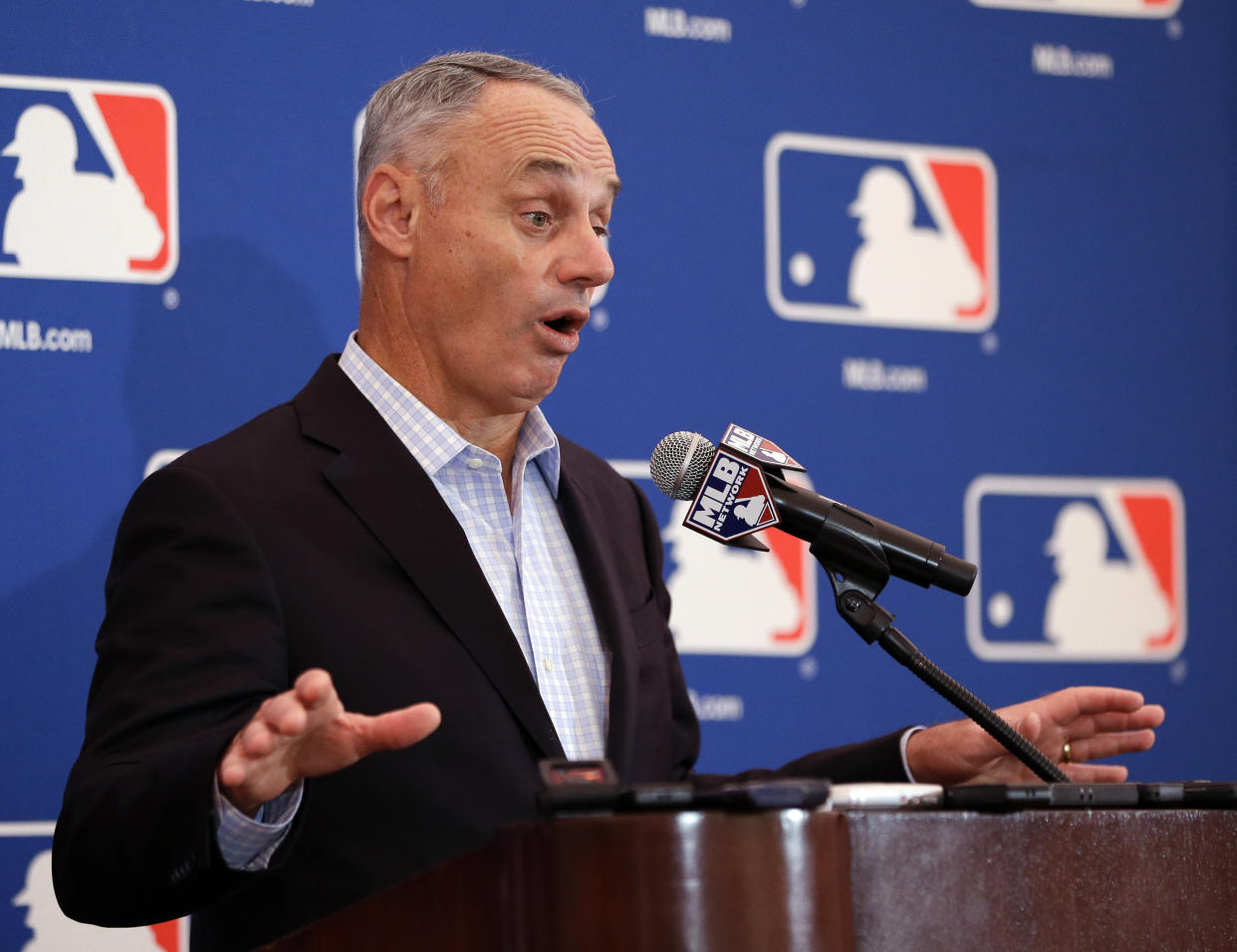Rob Manfred wants a pitch clock, which isn't as scary as it sounds

Many games over the course of the playoffs were fun, exciting, thrilling, and suspenseful. But many games were also really, really long, sometimes dragging past the four (or five) hour mark. And Major League Baseball thinks it has a way to combat that. Craig Calcaterra of Hardball Talk reported on Wednesday that MLB is interested in drawing up a new pace-of-play agreement with the MLB Players Association to be ready for the 2018 season, and pitch clocks could be a big part of that.
A pitch clock sounds like a big, intrusive addition to the game, but of all the fixes that MLB could implement, the pitch clock is the least likely to materially affect the flow of the game. The clock has been around in the minors since 2015, and it’s changed nothing that anyone would notice (if anything at all). Most people don’t even realize it’s there. It may only end up shaving seconds off each at-bat, but there is the possibility that it could truly help the pace of MLB games by keeping pitchers to a steady time between pitches. Either way, it’s worth trying.
But it’s worth mentioning that there’s already a rule on the books about time between pitches. Why haven’t you heard of it? Because the umpires don’t enforce it. It’s rule 5.07(c) in the 2017 Official Baseball Rules, and it’s been on the books for at least a few years.
When the bases are unoccupied, the pitcher shall deliver the ball to the batter within 12 seconds after he receives the ball. Each time the pitcher delays the game by violating this rule, the umpire shall call “Ball.”
The 12-second timing starts when the pitcher is in possession of the ball and the batter is in the box, alert to the pitcher. The timing stops when the pitcher releases the ball.
A rule is no good if it’s not enforced. But asking the umpires to start counting in their heads between pitches seems like a disaster waiting to happen. A clock just makes more sense, since then no one is relying on Umpire King Joe West’s counting skills. (For the record: the pitch clock in the minors is 20 seconds, and we have no idea whether or not the major league pitch clock would be 12 seconds or 20 seconds or a different duration all together.)
Calcaterra mentioned another possible pace-of-play improvement that’s on the table, and it already debuted during the playoffs. At various points during the game, usually when there was no need for any announcing or commentating (like mound visits), Fox split the screen, putting the game in a box on one side and showing an advertisement on the other. It was a neat, tidy way to keep the game on the screen while satisfying the desires of their advertisers.
But it’s not the ready-made, elegant solution that it seems. As they were used in the playoffs, the split-screen advertisements didn’t really shorten the duration of any games, they were used to provide additional advertising opportunities during mound visits. If these split screen advertisements are supposed to actually improve pace-of-play, they’d have to be used between innings and during pitching changes, and the commercial breaks themselves would have to be shorter.
Commissioner Rob Manfred said on Thursday that pace-of-play regulations will get done with or without the MLBPA’s cooperation, which is an interesting stance to take since according to Calcaterra, the MLBPA indicated in August that they would work with MLB on a pitch clock. Here’s exactly what Manfred said to the Associated Press:
Speaking Thursday after a quarterly owners’ meeting, Manfred says “my preferred path is a negotiated agreement with the players, but if we can’t get an agreement we are going to have rule changes in 2018 one way or the other.”
So either the MLBPA is already pushing back, or Manfred is just anticipating pushback. Either way he’s being pretty aggressive about it, but I guess that’s just how much he wants pace-of-play changes.
Though if Manfred wants changes that badly, he might want to consider something a little more drastic than a pitch clock. Mound visits have become excessive, and they take up so much time. During the playoffs, several mound visits would happen during a single at-bat, which is just insane. Limiting mound visits wouldn’t be a small move for Manfred to make, and it’s likely that the MLBPA would have some serious problems with it, but it should at least be considered. It would force catchers and pitchers to communicate in different ways, and to possibly have a more concrete plan for each hitter. And everyone would have to be more strategic about when to visit the mound.
Regardless of what the pace-of-play changes look like, Manfred seems determined to get something done this offseason. It’s up to him to decide if it’s going to be to be more window dressing like the time limits on replay challenges that were introduced for the 2017 season, or if it’ll be something more significant.
More MLB coverage from Yahoo Sports:
– – – – – –
Liz Roscher is a writer for Big League Stew on Yahoo Sports. Have a tip? Email her at lizroscher@yahoo.com or follow her on twitter! Follow @lizroscher


